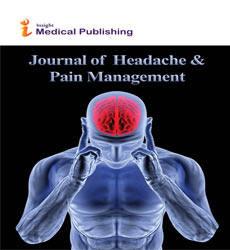Abstract
Migraine without Aura -Towards a New Definition
Objective: To quickly diagnose migraine without aura in a busy practice clinical in India and other developing countries.
Background: Differentiating migraine from episodic tension type headaches is difficult if one strictly follows International classification of headache disorders- 3rd edition beta version (ICHD 3 Beta), as there are many overlapping statements. Another problem is applying criterion E, not better accounted for by another ICHD 3 beta diagnosis. Duration, presence of head pain and associated migraine diagnostic symptoms except vomiting and nausea are not mandatory to diagnose Episodic syndromes that may be associated with migraine (ICHD 3 Beta code 1.6) or Periodic syndromes (ICHD2) that are commonly precursors of migraine.
Methods: A retrospective chart review was done on 6,200patients. All were diagnosed as Migraine without aura, Probable migraine or Benign secondary headaches, and the following four common features were identified- recurrent headaches / activity affected / absolutely normal in between episodes/ no red flags present. History of two more additional helpful diagnostic features was also noted - Common migraine triggers precipitating these headaches and family history of migraine or its synonyms. Exclusion criteria include aura, autonomic manifestations, headaches lasting more than 3 days, headaches with migraine features that are not activity dependent, post dromal symptoms, fever and other systemic disorders.
Results: 92% of patients fulfilled the four simple migraine diagnostic features. 88% had one of the common migraine triggers precipitating their headaches and 91% had family history of migraine.
Conclusion: Recurrent activity affected headaches with absolute normality in between episodes and without any red flags, should lead one to consider the diagnosis of migraine without aura.
Author(s):
M V Francis
Abstract | Full-Text | PDF
Share this

Abstracted/Indexed in
- Google Scholar
- Directory of Research Journal Indexing (DRJI)
- WorldCat
- Secret Search Engine Labs
Open Access Journals
- Aquaculture & Veterinary Science
- Chemistry & Chemical Sciences
- Clinical Sciences
- Engineering
- General Science
- Genetics & Molecular Biology
- Health Care & Nursing
- Immunology & Microbiology
- Materials Science
- Mathematics & Physics
- Medical Sciences
- Neurology & Psychiatry
- Oncology & Cancer Science
- Pharmaceutical Sciences
